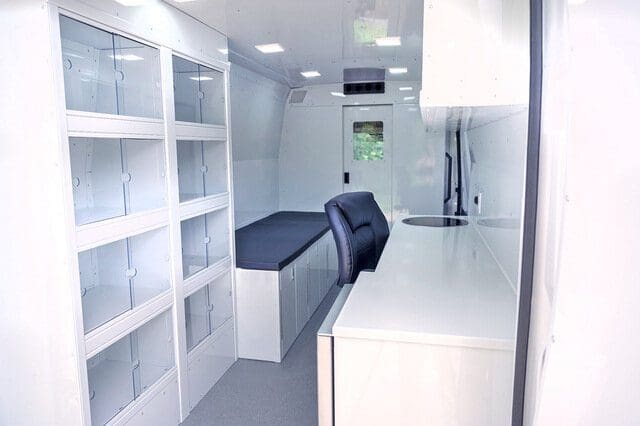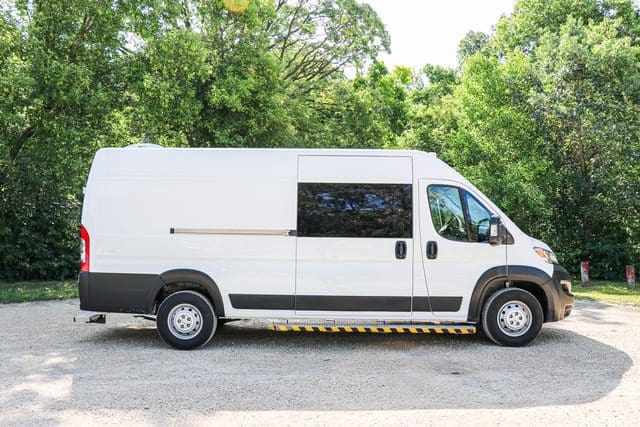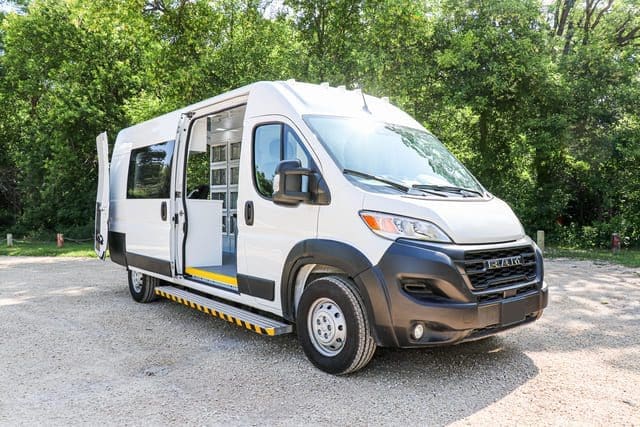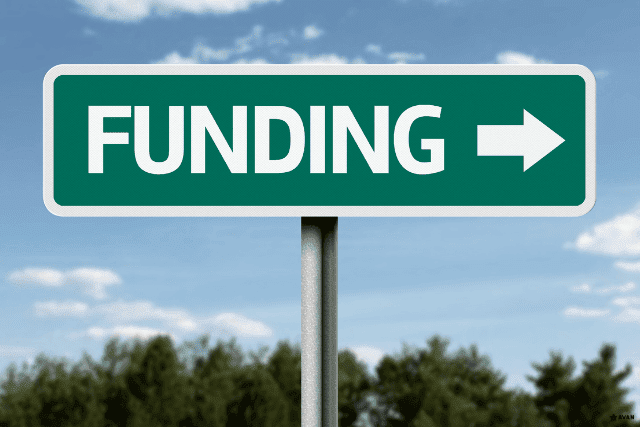Ever feel like quality healthcare is just out of reach for many communities? If you’re an organization looking to bring medical services to remote or underserved urban areas, you probably know this struggle all too well. You’re concerned about how to make it work – the logistics, the costs, the impact. You see the healthcare gaps and want to fill them, but figuring out how is tough.
If you missed part one of our series on mobile clinics, don’t forget to read that before continuing with this one.
At AVAN Mobility, we’ve spent over 10 years reducing barriers to healthcare and saving lives. Organizations all over the U.S. use our innovative, accessible vehicles designed to bring medical services to where they’re most needed. While we’re confident in our expertise, we know we’re not the only manufacturer in town. We’re here to give you the best information so you can make the smartest choice.
In this article, you’ll learn how mobile clinics can boost healthcare in both rural and urban areas. By the end, you’ll see how mobile clinics can close the healthcare gap and help you decide if they’re the right move for your organization.
What are the challenges of rural healthcare in the U.S.?
Americans living in rural regions face unique and serious healthcare challenges. The facts are alarming:
- People in rural areas have a higher chance of dying from the most common causes of death, such as stroke, heart disease, cancer, and lung disease.
- They’re also at a higher risk of suicide, deadly car accidents, and drug overdoses.
Why is this happening? Several factors contribute to these worrying statistics. Let’s take a closer look at that and some of the other challenges of rural healthcare.
Limited access to healthcare
People living in rural regions aren’t tested for chronic conditions as often as those living in urban areas. For example, 82% of men over 50 in rural areas have undergone prostate screening compared to 87% of men in urban areas.
This gap in testing means that many rural residents don’t get diagnosed until it’s too late.
Higher uninsurance rates
Rural residents are more likely to be uninsured for healthcare than their urban counterparts. Without insurance, many people can’t afford regular check-ups or treatments, leading to worse health outcomes.
Check out a video of one of our past clients who is using a mobile clinic specifically to provide healthcare to the uninsured in Missouri.
Fewer healthcare providers
Rural healthcare is more expensive and less accessible due to a lack of providers. Consider these stats:
Doctor shortage: Fewer than 11% of doctors practice in rural areas, even though 20% of the U.S. population lives there.
Hospital closures: Over 30% of rural hospitals are facing the risk of closure.
With fewer doctors and hospitals, people in rural areas have to travel long distances for care, which can be difficult and costly.
Higher costs
Healthcare costs are often higher for rural residents because:
Travel expenses: Long trips to see a doctor add up.
Fewer options: Limited healthcare providers mean less competition and higher prices.
What’s the impact of mobile clinics on rural healthcare challenges?

Mobile clinics can play a huge role in addressing these challenges. When your organization brings healthcare directly to rural areas, you can:
Increase access: More frequent screenings and check-ups can catch chronic conditions early.
Reduce costs: Bringing care to the community cuts down on travel expenses.
Support hospitals: Mobile clinics can relieve some of the pressure on struggling rural hospitals by providing basic care and preventive services.
These benefits can make a big difference for organizations like yours that are considering starting a mobile clinic. You can help bridge the healthcare gap in rural areas, ensuring that everyone has a fair chance at a healthier life.
What are the challenges of urban healthcare in the U.S.?
Only a quarter of Americans live in major cities, but these cities are home to 50% of the country’s homeless population. This creates unique challenges for urban healthcare.
Aside from homelessness, there are also several other challenges of urban healthcare.
Overcrowded facilities
Cities like Los Angeles and New York City can often feel crowded, which means:
Packed hospitals: Hospitals and clinics have too many patients. This makes it hard for everyone to get care quickly.
Long wait times: People often wait hours in the emergency room or weeks for a specialist appointment. This can make their health problems worse.
Homelessness
Homeless people have special healthcare needs:
Chronic illnesses: Many homeless people have ongoing health problems like diabetes, heart disease, and mental health issues. These problems often get worse because they can’t get regular care.
Access problems: Homeless people often don’t have insurance or transportation. They can’t easily get to a doctor or clinic.
Socioeconomic disparities
Cities have big differences between rich and poor neighborhoods:
Health inequities: People in poorer neighborhoods get sick more often and don’t live as long. They don’t get as much preventive care, which helps keep people healthy.
Access issues: In many cases, people in low-income neighborhoods lack reliable transportation to a clinic and can’t afford it.
Environmental health risks
Cities have their own health risks:
Air pollution: Bad air can make breathing problems worse, like asthma and bronchitis.
Noise pollution: Constant noise can make it hard to sleep and, over time, cause stress and heart problems.
What’s the impact of mobile clinics on urban healthcare challenges?

Mobile clinics can help a lot with urban healthcare problems. By bringing medical services directly to underserved areas, mobile medical units can:
Ease overcrowding: Mobile clinics can help reduce the number of patients in busy hospitals and clinics by offering basic care and check-ups in the community.
Reach the homeless: They can provide regular check-ups, vaccinations, and mental health services to homeless people right where they are.
Bridge the transportation gap: Mobile clinics can go to low-income neighborhoods and offer screenings and basic care close to where people live.
Target health risks: Mobile clinics can move to different areas as needed, like setting up in places with bad air pollution to help people with breathing problems or those dealing with substance abuse.
For organizations considering mobile clinics, the benefits are clear. Mobile medical units can help reduce the strain on urban healthcare systems and ensure everyone gets the care they need, no matter their situation.
Your next steps in bridging the gap in rural and urban healthcare

You came to this article looking for solutions to bring quality healthcare to underserved rural and urban areas. After reading, you’ve learned how mobile clinics can address specific challenges and improve healthcare access for these communities.
Stay tuned for part three of this series on mobile clinics, where we’ll discuss the different types of mobile clinics and how your organization can use them.
At AVAN Mobility, we understand the real-life impact of healthcare access. Our team has worked closely with countless organizations, listening to their needs and creating custom mobile medical units that make a difference.
We are passionate about innovation, integrity, and inclusion, and we believe in making healthcare accessible for everyone. If you want to learn how organizations like yours are embracing mobile health or if you have any questions about anything, click the button below to talk to a mobility expert.





